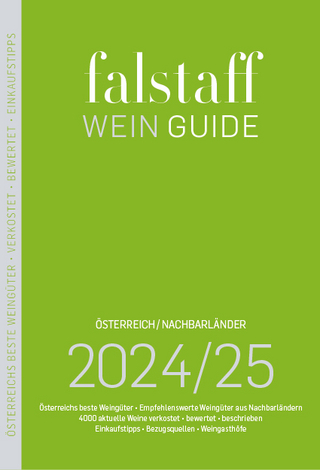
Managing Employees in Foodservice Operations
John Wiley & Sons Inc (Verlag)
978-1-394-20841-8 (ISBN)
A foodservice operation can only remain successful if its employees are served as well as its customers. Just as a business with no customers will fail for lack of revenue, one without skilled, professional, satisfied staff will be unable to provide service at the level customers demand. Attracting and retaining qualified staff is a critical challenge for the modern foodservice industry, and one which is only becoming more urgent in today’s market.
Managing Employees in Foodservice Operations offers a uniquely foodservice-oriented guide to obtaining, training, and retaining employees in a fast-paced and highly competitive industry.
The book provides:
Content perfectly aligned with a two-year community college program courses in human resources, supervision, small business administration, or related subjects
Detailed discussion of topics including workplace health and safety, recruitment and retention, and many more
Ideas cultivated during the authors’ decades of combined experience in hospitality, foodservice, leadership, and research
Material to support instructors conducting courses, including PowerPoints, chapter-by-chapter exam questions, and case studies
Managing Employees in Foodservice Operations is ideal for students in foodservice-related courses, as well as professional business
David K. Hayes, PhD, has taught hospitality courses at Purdue University, Texas Tech University, The University of Houston, and Lansing Community College. He has served as the Vice President of Broadcast and Video Training for the American Hotel & Lodging Educational Institute. Jack D. Ninemeier, PhD, is an Emeritus Professor in the School of Hospitality Business at Michigan State University. He has many years’ experience developing and providing training and resource materials for commercial and non-commercial foodservice operations. He has also written several hundred articles for trade journals and created numerous training monographs. Part of Wiley’s Foodservice Operations: The Essentials series.
Preface ix
Acknowledgments xv
Dedication xvii
1 Leading the Foodservice Team 1
Foodservice Operators as Leaders 2
Serving Guests and Employees 5
Leadership Styles 6
Mission Statements and Core Values 10
Important Leadership Practices 12
Act the Way Employees Should Act 12
Share Mission Statement and Core Values with Staff Members 13
Challenge Existing Processes and Procedures 13
Enable Employees with Trust and Delegation 14
Show Appreciation for Individual Excellence 14
Special Concerns of Foodservice Leaders 15
Employee Empowerment 15
Employee Team Development 17
Benefits of Effective Teamwork 18
Characteristics of Effective Team Leaders 19
Cross-Functional and Self-directed Work Teams 19
Ethics 20
2 Legal Aspects of Employee Management 26
Understanding Employment Law 27
Federal Laws Affecting Employee Management 30
Pre-1964 Federal Employment Legislation 31
Post-1964 Federal Employment Legislation 33
State Laws Affecting Employee Management 41
Local Laws and Ordinances Affecting Employee Management 43
3 Workplace Health and Safety 48
The Importance of Protecting Team Members 49
Legal Aspects of Employee Protection 50
Financial Aspects of Employee Protection 50
Creating a Healthy Workplace 52
Employee Assistance Programs 53
Employee Wellness Programs 54
Maintaining a Safe Workplace 54
The Occupational Safety and Health Administration (OSHA) 55
Safety Planning 59
Maintaining a Secure Workplace 62
Preventing Harassment 62
Preventing Workplace Violence 67
4 Developing Policies and Procedures 73
Creating Policies and Procedures 74
Policy and Procedure Development 75
Key Areas of Policy and Procedure Development 76
Steps in Employee Policy and Procedure Development 82
Reviewing for Legal Compliance 84
Employee Handbooks 88
Recordkeeping Requirements 91
5 Recruiting and Retaining Team Members 98
Job Design and Job Creation 99
The Impact of Job Design 100
Effectively Designing and Creating Jobs 102
Recruiting Team Members 109
Internal Recruiting 111
Traditional External Recruitment Methods 112
Internet-based External Recruitment Methods 114
Recruitment of Diverse Team Members 115
Retaining Team Members 117
6 Interviewing and Selecting Team Members 122
Choosing Valuable Team Members 123
Applications 124
Interviews 126
Pre-employment Testing 132
Background Checks and References 133
Negligent Hiring 136
Making Job Offers 136
Required Documentation for New Team Members 138
Form I-9 (Federal Form) 138
Form W-4 (Federal Form) 139
State and Local Tax Forms 140
7 Orienting and Onboarding New Team Members 144
Importance of New Team Member Adaptation 145
The Adaptation Process 146
Steps in the Adaptation Process 147
Formal Orientation Programs 149
The Goals of Orientation Programs 150
The Impact of Orientation Programs on New Team Members 151
The Impact of Orientation Programs on Existing Team Members 152
The Impact of Orientation Programs on Guests 152
Key Elements of Orientation Programs 152
Compliance with Government Regulations 153
Communication of the Operation’s Mission and Culture 153
Communication of All Employee Benefits 154
Communication of Critical Policies 154
Introduction to the Operation and Other Team Members 158
Detailed Explanation of the New Team Member’s Job Duties 158
Documentation 158
Successful Onboarding of New Team Members 161
8 Planning for Employee Training 166
The Importance of Training 167
Benefits of Training 168
Training Obstacles and Myths 169
Training Principles 172
Characteristics of Effective Trainers 177
Steps in Creating Effective Training Programs 179
Step 1: Identify Training Needs 180
Step 2: Develop Training Objectives 182
Step 3: Develop Training Plans 184
Step 4: Create Training Lessons 185
Step 5: Develop (and Up-date) Training Handbooks 186
Technology and User-Generated Content (UGC) Scores 188
9 Delivering and Evaluating Training 194
On-Job Training 195
On-Job Training Steps 198
Step 1: Preparation 198
Step 2: Presentation 199
Step 3: Practice and Demonstration 201
Step 4: Coaching 202
Other Individual Training Methods 203
Group Training 206
Preparing for Group Training 207
Delivering Group Training 208
Special Training Considerations 210
Evaluating Training Efforts 212
Evaluation Before Training 215
Evaluation During Training 216
Evaluation After Training 216
10 Compensating and Scheduling Staff 222
The Importance of Compensation 223
The Business Owner’s View of Compensation 224
The Foodservice Operator’s View of Compensation 225
The Staff Member’s View of Compensation 226
Compensation of Team Members 230
Legal Aspects of Compensation 231
Payment of Salaries 231
Payment of Hourly Wages 233
Compensation of Tipped Employees 233
Benefit Payments 236
Scheduling Team Members 241
Legal Aspects of Scheduling 242
Schedule Development and Distribution 243
11 Appraising and Managing Staff 250
Performance Appraisal Programs 251
The Importance of Regular Performance Appraisal 252
The Characteristics of Effective Performance Appraisal 254
Benefits of Performance Appraisal Programs 255
Popular Performance Appraisal Methods 257
Absolute Standards 257
Relative Standards 259
Targeted Outcomes 260
Progressive Discipline Programs 262
Documented Oral Warning 264
Written Warning 264
Suspension 265
Dismissal 266
Staff Separation 267
Voluntary Separation 268
Involuntary Separation 268
Exit Interviews 271
12 Managing Labor- Related Costs 276
The Importance of Labor Cost Control 277
Factors Affecting Total Labor Costs 278
Total Labor Costs Reported on the Income Statement 283
Managing and Controlling Total Labor Costs 289
Types of Labor Costs 290
Controlling Total Labor Costs 290
Assessment of Total Labor Costs 294
Sales per Labor Hour 296
Labor Dollars per Guest Served 297
Labor Cost Percentage 298
Glossary G-1
Index I-1
| Erscheinungsdatum | 09.01.2024 |
|---|---|
| Reihe/Serie | Foodservice Operations: The Essentials |
| Verlagsort | New York |
| Sprache | englisch |
| Maße | 150 x 229 mm |
| Gewicht | 454 g |
| Themenwelt | Sachbuch/Ratgeber ► Essen / Trinken |
| Reisen ► Hotel- / Restaurantführer | |
| Technik ► Lebensmitteltechnologie | |
| Wirtschaft | |
| ISBN-10 | 1-394-20841-3 / 1394208413 |
| ISBN-13 | 978-1-394-20841-8 / 9781394208418 |
| Zustand | Neuware |
| Haben Sie eine Frage zum Produkt? |
aus dem Bereich


